As Pearsons had been one of General Motors major dealers in the north of England, they were asked to help the American company find a new operational assembly plant when the GM factory at Southampton was blitzed in 1940. Pearsons duly obliged and proposed that an old cotton mill at Cuerdon Bamber Bridge near Preston, would be ideally placed for receiving the vehicles that were then being imported.
However, in addition, Pearsons quickly established the opportunity to acquire some of the assembly of Canadian Military Pattern vehicles in Liverpool. As these supplies became exhausted, and new vehicle chassis were released by the UK vehicle makers, Pearsons returned to their pre-war activities of being a coach - and body-builder.
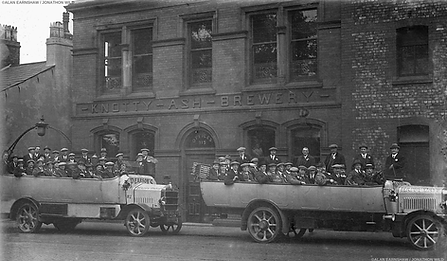
This early view of a pair of Pearsons-owned Happy Days coaches in front of the Knotty Ash Brewery in East Prescot Road, Liverpool 14.
The date is probably in the first half of the 1920s.
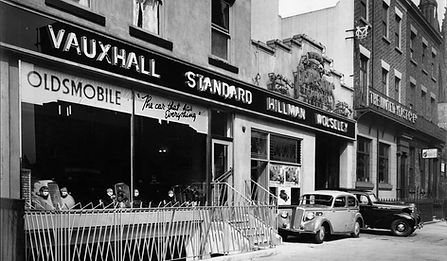
This is the Shaw Street Garage at 3, 5 & 7 Shaw Street, Liverpool 6 in 1938, where Pearsons had dealerships for British, American and German made vehicles.
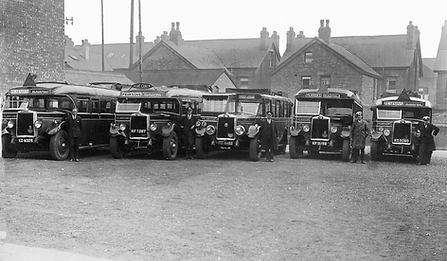
Part of the Pearsons - Happy Days coach fleet in the 1930s.
These coaches ran the daily services from Liverpool to Southport, Preston and Blackpool.
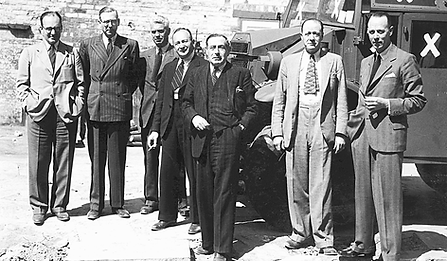
GM relocated to Cuerden Mill in Bamber Bridge after their Southampton Plant was bombed on 30th November/1st December 1940. These photographs were taken in the Spring of 1941 at the General Motors works.
From left to right are Messrs Reginald Cartwright (Managing Director, GM Ltd), G. Lloyd-Dixon of Rootes Ltd, C.S. Allanson (Director, GM Limited), R. Pearson of Pearsons Garage, J. Rundbaken (Rootes), H. H. Amos of GM Ltd, and G. Fone of Northern Counties Engineering Company Ltd.
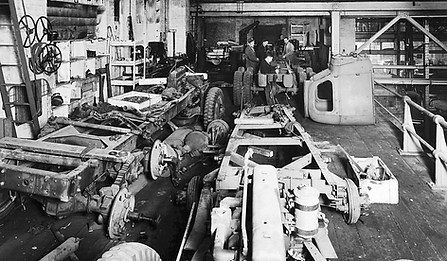
This view inside part of the fire-damaged Phoenix Safe Works further along Smithdown Lane demonstrates the variety of vehicles handled there in 1945! On the left is an International Harvester M14 Truck 15-cwt Half Tracked Personnel with the rear of another on the right.
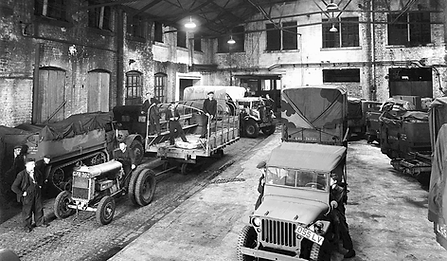
This is the building at 165, Smithdown Lane, which themselves had been very badly damaged in the German Luftwaffe raids on Liverpool over the winter of 1940/1. It shows a GMC three-ton, probably an ex-French order, ACKWX-353 or 21/2-ton CCKW-353 6 x 6 lorries being completely re-built.
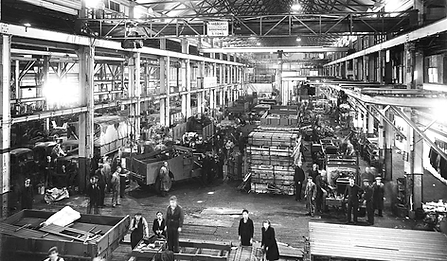
Here we have a picture that dates from November 1943, showing trucks being assembled in the corrugated asbestos sheet-clad building that had just been erected on bomb-damaged land between Angela Street and St. Arnaud Street. The first view shows a line of Truck 15 cwt 4 x 4 Personnel vehicles being assembled, which have been supplied by the White Motor Company of Cleveland, Ohio.
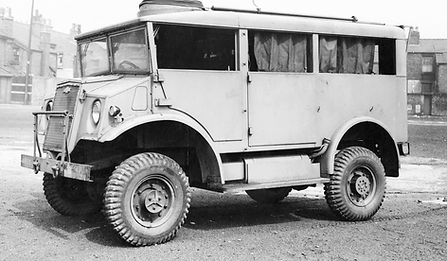
Following a War Department disposal sale held at Speke in January 1948, Pearsons purchased about 30 ex-RAF aircraft refuelling tankers on AEC chassis. This 10-ton tanker was fitted with a semi-elliptical stainless-steel body with a capacity of 2,500 gallons, which had three separate compartments and worked for the famous St. Helens firm of Suttons.

To meet the needs for new wartime single-deck buses, Vauxhall Motors were allowed to build the Bedford OWB, but the OWB bodies were only ever intended as being a short-term solution, and hundreds of them were falling to bits by the time the war ended. This photograph shows new bodies being built, ready for fitting on to both wartime Bedford OWB and post-war OB chassis, whilst on the right of the factory are several brand new Leyland Beaver chassis, including one with a tanker body.
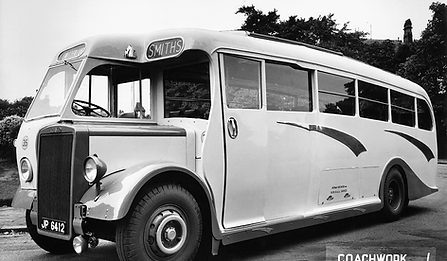
Pearsons bodied many bus and coach chassis in the post-war period, including the Leyland PS1/1, registered JP 6412.
It had chassis number 470488 and a Pearsons C33F body, it was supplied new to Smiths of Wigan in 1948/1949.
PEARSONS OF LIVERPOOL
PEARSONS OF LIVERPOOL